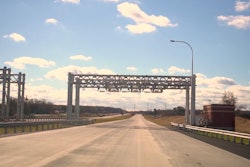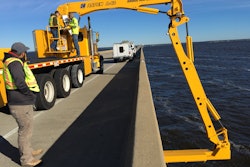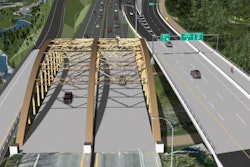 AASHTO’s new executive director, Jim Tymon, explains the detrimental impact of the partial government shutdown on state transportation planning and also on transit systems.
AASHTO’s new executive director, Jim Tymon, explains the detrimental impact of the partial government shutdown on state transportation planning and also on transit systems.The partial shutdown of the federal government has led to some departments of transportation to curtail planning for new projects, according to the American Association of State Highway and Transportation Officials (AASHTO).
As the shutdown over border wall funding enters its third week, other impacts include several mass transit systems that have been left scrambling, according to a story in the AASHTO Journal.
State transportation and transit agencies often rely on federal grants for both operating revenues and capital funding.
AASHTO’s new executive director, Jim Tymon, explains in the article that since the 115th Congress did not pass Fiscal Year 2019 appropriations for seven of the 12 annual spending bills – including the Transportation-Housing and Urban Development or THUD package – states to date are limited to only about a quarter of the federal funding they are scheduled to receive this year.
He stresses, however, that the U.S. Department of Transportation employees paid out of the Highway Trust Fund – including all Federal Highway Administration employees – are reporting to duty with pay as usual and that FHWA is able to continue reimbursing states for projects approved prior to the shutdown.
“I think what you’ll see in the short term is states finding ways to move money around from different pots in order to keep their systems operating as efficiently as possible. It’s not something they can do forever,” Tymon said in a recent conference call with the AASHTO Journal. “The longer this drags on, you’re going to see states start to draw back on their letting for new projects because they won’t have their full allocation of federal money for 2019 yet.”
For example, the story says, “while a January 8 FHWA funding notice makes $30 billion worth of FY 2019 transportation funding available to be committed by states as authorized under the five-year Fixing America’s Surface Transportation, or FAST, Act, the agency also said that it would be ‘inadvisable’ or states to commit a large amount of new federal dollars provided under today’s notice.”
Tymon added that the effect of this past Tuesday’s FHWA notice is that even if full FY 2019 highway dollars are now technically available, for all practical purposes, states can’t really commit all of those dollars because there’s a risk of having to return some of them if the shutdown ends with another continuing resolution.
“This remains a fluid situation and is becoming one with less and less precedence,” he explains.
The article also quotes Oklahoma DOT Executive Director Mike Patterson as saying that roughly 45 upcoming highway, county road, and city street projects set to go out for bid in January and February totaling more than $137 million had to be delayed due to the lack of federal funding authorization.
“While we’re very grateful that the Highway Trust Fund remains available to pay for the federal share of projects already under construction, the inability to award new contracts with federal funds could delay some projects from starting for several months.” Patterson says. “If this budget impasse continues, contractors could miss out on some of this year’s prime construction season in the spring and summer.”











